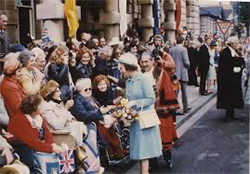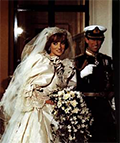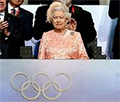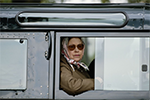Queen Elizabeth II of the United Kingdom
Part 2: On the Throne In her long time on the throne, Queen Elizabeth developed relationships with more than a dozen prime ministers, the first of which was the famous wartime leader Winston Churchill. Succeeding Churchill were these:

To mark her Silver Jubilee in 1977, the queen traveled more than 50,000 miles around the world, visiting various parts of the Commonwealth. She began by visiting all parts of the United Kingdom, with one visit to Lancashire drawing more than a million people. Overseas, she went to Australia, Canada, Fiji, New Zealand, Papua New Guinea, Tonga, Western Samoa, and the West Indies. Back home, she kept the celebrations going, lighting a bonfire beacon at Windsor that started a chain reaction of beacon fires around the country, taking a boat trip down the River Thames (in a nod to the first Queen Elizabeth), and then christening the new South Bank Jubilee Gardens with a royal fireworks display and a number of royal waves. 
Prince Charles made headlines around the world in 1981 when he married Lady Diana Spencer. An estimated 750 million people around the world watched the ceremony on television. The couple had two sons, William and Harry. The year 1992 was a particularly difficult one for the royal family. The queen in a speech that year used the phrase Annus Horribilis, meaning "year of horrors." It was in that year that three of her children divorced or separated: Charles from Diana, Andrew from Sarah Ferguson, and Anne, from Mark Phillips. The latter divorced that year. Andrew and Sarah divorced in 1996. Charles and Diana were officially divorced in that same year; her death the following year in a car crash caused an outpouring of grief around the world. Ten years later, sad times shadowed another celebration. Elizabeth's Golden Jubilee was in 2002. During a weekend in June, the queen and the people of the U.K. celebrated with a classical music concert, a pop music concert, a fireworks display, and a reverse beacon lighting, wherein she lit the last of more than 2,000 that had been lit all across the Commonwealth. It was also in that year that her mother and sister both died. 
The queen's Diamond Jubilee in 2012 was a happy occasion all around (including her opening of the London Olympics), as was her Sapphire Jubilee five years later. On Sept. 9, 2015, she became the United Kingdom's longest-reigning monarch, surpassing that of her great-great grandmother Queen Victoria. The queen's husband, Prince Philip, died in 2021. He was 99. He and she had been married 73 years, and he had completed more than 22,000 royal engagements, many in her stead. In the realm of foreign affairs, Elizabeth traveled extensively but largely steered free from commenting on wars or policy initiatives. Among her accomplishments in the foreign arena:

In the same way that the queen didn't need a passport, she didn't need a driver's license. She traveled a lot in the backs of vehicles driven by chauffeurs, but she did make a habit of driving visitors around the royal estate; one of those treated to such a personal tour in 2003 was Abdullah, then the Crown Prince of Saudi Arabia, whose country only in 2017 allowed women to drive. The queen was the target of two assassination attempts and a few events of unwanted violations of personal space. She was on horseback leading the royal procession during the 1981 Trooping the Colour when a teenager got close enough to fire a gun point-blank at her; the bullets in the gun were blanks. The perpetrator was quickly overwhelmed, tried, convicted, and imprisoned. His sentence was five years, and he served three years. He did not make another attempt. In the same year, a gunman fired at her while she was visiting Dunedin, N.Z.; he missed, was captured, and spent time in confinement. The following year, a man eluded Buckingham Palace security and sneaked into the queen's bedroom; no harm came to either party. The queen was patron to more than 600 charities, including agricultural societies, the armed services, arts organizations, children's societies, environmental groups, hospitals, professional institutions, social clubs, sports associations, and schools and universities. She celebrated her 70th year on the throne in 2022. By that time, she was 96 and in declining health. She made a few public appearances but largely stayed out of the public eye. She died on Sept. 8. Her oldest son, Charles, succeeded her on the throne, becoming King Charles III. First page > Heir in Waiting > Page 1, 2 |
|
Social Studies for Kids
copyright 2002–2026
David White




